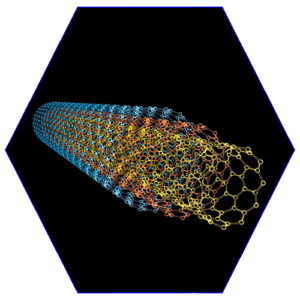Nanomaterials
Nanomaterials – are materials whose particle size is one unit (at least in one dimension) from 1 to 1000 nanometers, but more often from 1 to 100 nm. Materials with a nanoscale structure often have unique optical, electronic, or mechanical properties. Most modern nanomaterials can be divided into types, such as:
• Carbon materials (fullerene, graphene, carbon nanotubes, nanodiamonds, etc.)
• Metal-based materials (colloidal nanoparticles of silver, gold, etc.)
• Composites (polymer and mineral-carbon composite materials).
Carbon materials
These nanomaterials are composed mainly of carbon, most often in the form of hollow spheres, ellipsoids, or tubesSpherical and ellipsoidal carbon nanomaterials are called fullerenes, and cylindrical – nanotubes. These particles, as well as graphenes and nanodiamonds, have many potential applications, including improved films and coatings, more durable and lighter materials, and applications in electronics.
Metal Based Materials
These nanomaterials include nanogold, nanosilver, nanocopper and metal oxides such as titanium dioxide. New promising opportunities are opening up for using such nanomaterials in many fields of science and technology, biology and medicine. They are now used to produce effective and selective catalysts, to create elements of microelectronic and optical devices, for synthesis of new materials, etc.
Composites
These include multicomponent materials consisting of a matrix layer and a filler layer. Silica (silicon substrates) often acts as a matrix (substrate), and nanocarbon and polymers of various compositions can be a filler.








